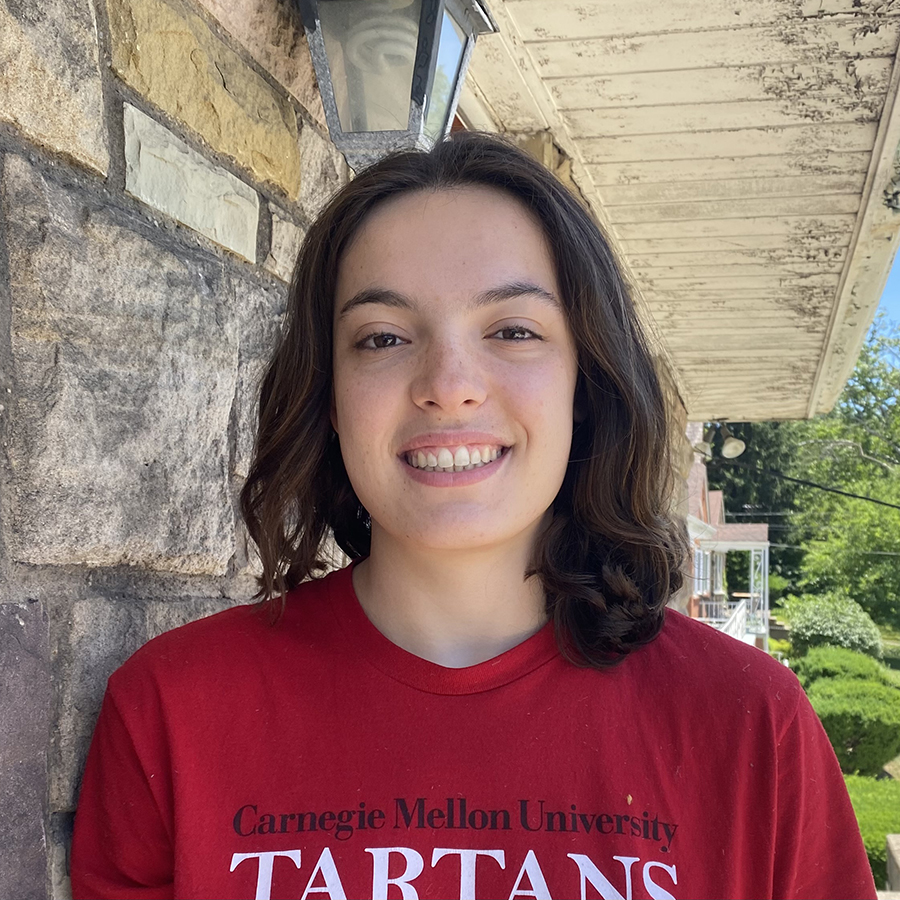Recent Comp Bio Grad Helps Expand Tool To Analyze Evolutionary Biology Traits
Marylee WilliamsThursday, October 31, 2024Print this page.

When Ruby Redlich graduated from Carnegie Mellon University this past May, she left campus with more than her bachelor's degree in computational biology. She also had a first-author credit on a publication in Molecular Biology and Evolution, a top evolutionary biology journal, as part of a team of researchers that expanded a tool to analyze convergent traits in evolutionary biology.
Redlich was always interested in biology, particularly evolution, and she began her time at CMU in the Mellon College of Science. But after taking statistics and algorithm courses, she decided to become a computational biology major in the School of Computer Science's Ray and Stephanie Lane Computational Biology Department.
"I enjoyed the problem-solving aspects of my computational biology courses and applying that type of thinking to these biological questions that I was more interested in," Redlich said.
In her sophomore year, she joined the university's Pfenning Lab and began working on an effort to expand RERconverge, an analysis tool used to find associations between evolutionary rates of genes and the development of traits across a phylogeny — a tree describing the evolutionary relationships between species. RERconverge can also infer the ancestral history of a trait, which helps scientists understand how things like diet or circadian rhythms evolved.
Redlich and the other research team members aimed to expand RERconverge to analyze traits with more than two categories. For example, mammals are commonly divided into three diet categories: herbivore, omnivore and carnivore. Previously, if researchers wanted to compare and analyze what led to these diets using RERconverge, they would need to compare two diets at a time, forcing binary groupings. Researchers wanted to compare all three diets.
"We would compare all the herbivores to all the omnivores to all the carnivores and look for differences in evolutionary rates of genes between those three groups," Redlich said. "Convergence or independent evolution is important, and it is kind of the same idea of why in science you might perform multiple independent replicates. If a group of species all inherit a phenotype from their common ancestor, then they might be similar genetically for many different reasons. But if they evolve this trait independently, hopefully, the genetic similarities that we're finding are related to that trait rather than some other similarities."
Redlich worked with her mentor, Amanda Kowalczyk, who encouraged and supported her throughout the project. Kowalczyk developed RERconverge, and Redlich met her while Kowalczyk was doing a postdoctoral fellowship in the Lane Computational Biology Department. One of Redlich's contributions was developing algorithms that calculate more reliable p-values — which quantify the significance of an observation — for the type of phylogenetic data she worked with. She said it took her about two months and a lot of research to find the solution for this step.
Redlich said her first goal when she came to CMU was to find a lab that would allow her to join and do research as an undergraduate.
"I knew I wanted to do research because I was considering graduate school," she said. "Once I got into the Pfenning Lab, my goal was to finish some part of a project. It kept growing until we got here."
Redlich is now pursuing a Ph.D. at Princeton University.
Aaron Aupperlee | 412-268-9068 | aaupperlee@cmu.edu
